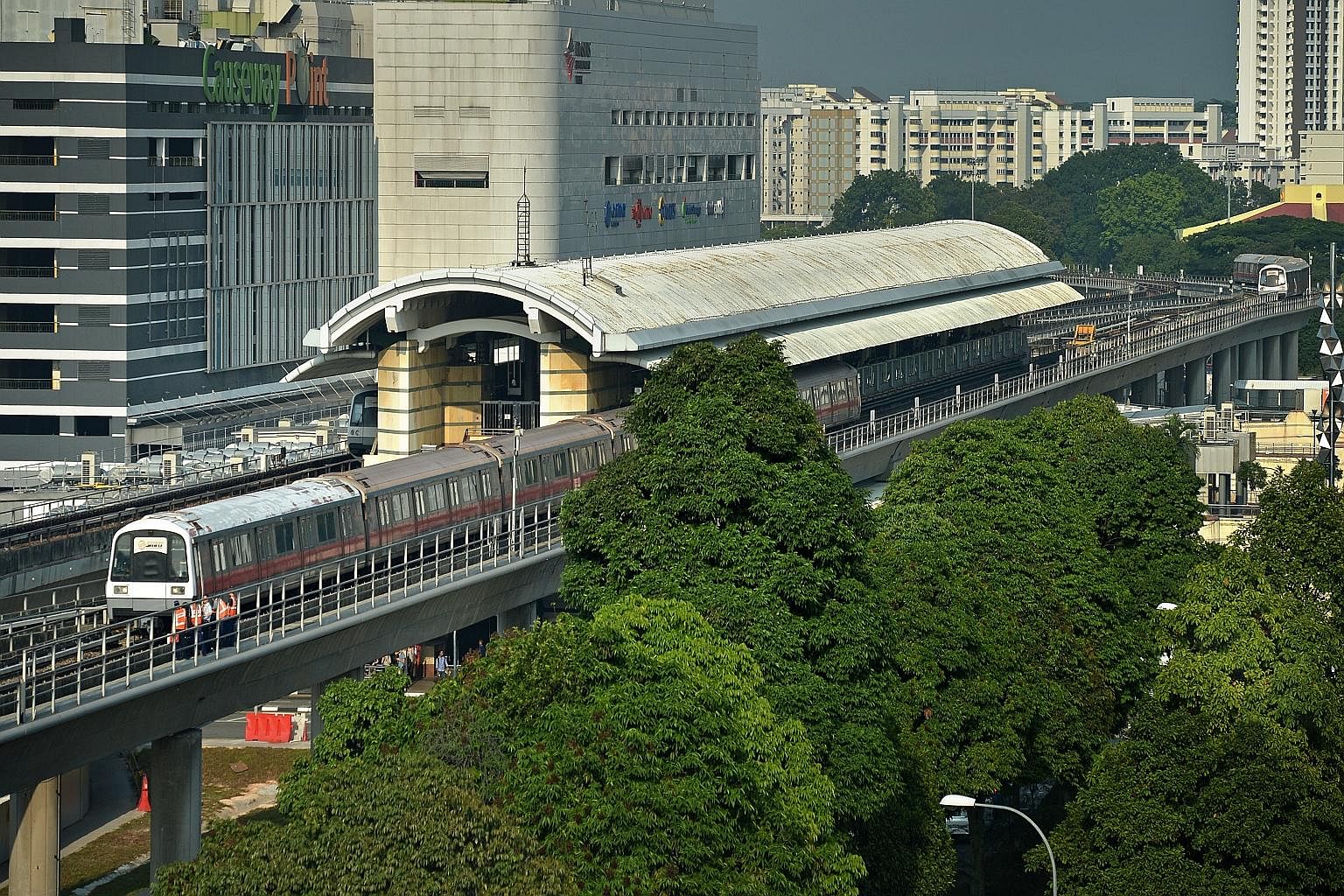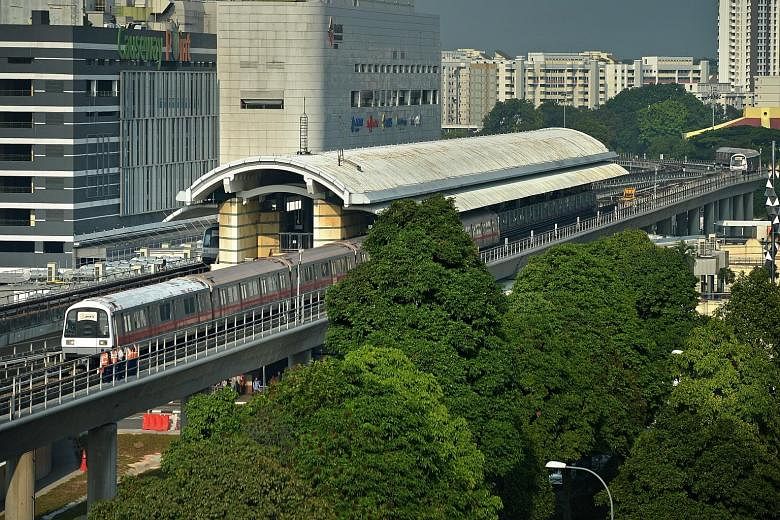The breakdown of both the North-South and East-West MRT lines during the evening peak period on July 7 was the biggest train disruption here to date, affecting 250,000 commuters for over two hours.
A week later, 19 blocks of Housing Board flats in Bukit Panjang were hit by a blackout affecting not only households, but also lifts, corridors, traffic lights and street lamps in the area. And in November last year, trading at the Singapore Exchange - South-east Asia's largest stock market - was suspended for three hours due to a power outage.
While a tremendous amount of effort has been put into making Singapore more progressive, "smarter", more liveable and more sustainable, Singapore's well-being and development could well be set back if its infrastructure systems - the city's "backbone" - were to fail.
Infrastructure is a network of systems that provide essential services to maintain the metabolism of developed, urbanised societies. They include energy supply, transportation, communication, banking and finance, emergency, and other services.

Singapore, like most urbanised societies, is hugely dependent on the reliability of the network of infrastructure systems to support its day-to-day activities.
Today, the increase in population density, along with the increase in complexity and interdependency of infrastructure systems, has amplified the emergence of disruptions to those systems.
A look at complex, interconnected infrastructure systems could shed light on their behaviour.
First, an efficient transport system was developed during the Industrial Revolution. By the end of the 19th century, electrification had emerged, supplying energy and fostering innovative methods of production and utilities management.
Since the 1980s, information and communication technology has triggered a new phase of infrastructure development. As these systems are highly interdependent, a trigger could result in a series of cascading failures. Indeed, at the establishment of the Cyber Security Agency in April this year, Deputy Prime Minister and Home Affairs Minister Teo Chee Hean remarked: "If you look at any sector in Singapore, be it healthcare, transportation, power systems, water supply - they all are cyber-enabled in one way or another. And so, the cyber world permeates many sectors in Singapore and has become increasingly interconnected."
On a smaller scale, interdependent clusters of systems are seen in the five systems that operate the MRT system.
The base system consists of the rail system, which the trains run on. The energy system provides the power to operate the trains, stations and facilities, while the transaction system handles automated entry and exit and payment. The automatic control system controls when the trains stop at the stations, allows commuters to board and alight, and controls departure and emergency stops.
Finally, the communication system provides operational and emergency information to commuters - which would be part of the service recovery system to keep them informed of an emergency situation and redirect them to bus services.
Since systems are built by people and for people, people play an important role in these systems.
And from the "socio-technical" perspective, systems are made up not only of an engineered system, but also an operating organisation, and the system of users.
Analyses of large-scale disruptions such as the Nasa Columbia and Challenger space shuttle explosions, toxic leaks at Bhopal and radiation contamination at Fukushima
have revealed that user and operator sub-systems are often the weak link triggering these catastrophic failures.
Hence, the ability to develop a robust system hinges on the ability to understand the technical system, the interaction between systems, and the behaviour of people who use the systems.
BUILDING RESILIENT INFRASTRUCTURE SYSTEMS
Traditionally, to protect a system against external and internal disruptions, systems have been designed with the resistance to withstand disruptions up to an upper limit, which is determined based on statistical analysis.
However, with increasingly complex and interconnected systems, coupled with the increased uncertainty of triggering events and responses, this approach no longer holds.
Disruptions that are beyond statistical thresholds, commonly termed "outliers", "black swans" or "dragon-kings", such as the Fukushima nuclear disaster, can rarely be predicted with traditional methods. Albert Einstein famously said: "We cannot solve problems with the same kind of thinking we used when we created them."
Systems must be made more fault-tolerant beyond pure resistance, enabling them to self-organise, recover and learn. System resilience is an emerging concept to enable a system to cope with increasing uncertainties.
A resilient system would have the capacity to absorb shocks, to recover from the impact of the disruption, to learn and adapt to such a disruption, and eventually to self-modify, much like a biological system.
Today, population growth, changing demographics, new technologies, ageing infrastructure and modified operating regimes have amplified the emergence of disruptions and system-associated responses. Developed nations like Singapore are not spared these disruptions.
The paradigm change from system resistance to system resilience is a promising framework to cope with uncertain future shocks.
Upon this framework, with an understanding of complex systems and the socio-technical perspective, the capacity to model and predict behavioural patterns can be developed to make interdependent infrastructure systems - the "backbone"of urbanised societies - more robust and resilient.
• The writer is project leader of the Future Resilient Systems programme at the Singapore-ETH Centre.

